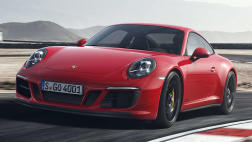The BMW 5 Series is a medium-large German machine that’s aimed as much at the sports sedan market as at the buyers of luxury saloons.
Older 5 Series are rather smaller inside than you might expect. That’s chiefly because it has rear-wheel drive and the engine is set well back in the bay, meaning the gearbox is beside your feet. Recent cars, since about 2004, are better off in this respect, but it’s still wise to try all seats for size.
Handling is enhanced by the near-perfect weight distribution that’s the result of rear-wheel drive and the engine’s position. This is a car that feels just wonderful; seemingly the harder you drive at a bend the better it feels and responds.
The really clever thing is that this sports handling is achieved without upsetting comfort. Some of the worst of Australian roads may catch it out at times, but it generally makes light work of rough surfaces.
The great majority of BMW 5 Series sold in Australia are four-door sedans, but in recent years we seem to be joining our European cousins in choosing station wagons. Called ‘Touring’ wagons in BMW speak, these have a reasonable carrying capacity, though, as is often the way in the boutique-wagon class the slope of the rear end does restrict the entry of bulky objects.
Engine performance is good, even from the models with relatively small capacity. The non-turbo straight-six with a relatively small size of 2.0 litres, but has enough performance for many owners. The silky smooth nature of the straight sixes is excellent.
Big capacity BMW straight-sixes are some of our all-time favourite powerplants, providing effortless performance and a willingness to rev that’s delightful.
Many recent BMWs have turbocharged four-cylinder units that have plenty of torque. Though the engineering to minimise turbo lag is impressive, they still don’t provide the near instantaneous response we have loved in BMW non-turbo engines for many decades.
Rounding out the petrol engine range are superb V8 units. Big on power and torque they are much loved by enthusiastic drives. Their fuel consumption isn’t as high as you might anticipate as they are an excellent design.
BMW Australia was one of the early adopters of turbo-diesel technology downunder. These have become increasingly popular over the years. Turbo lag is better than average, but can still be a pain at times. But once that lag has gone and you’re into the big-torque midrange, you will love the endless grunt they provide.
Insurance can be expensive due to the cost of parts and the high status of trained repairers. So if you are moving up from a more mundane car to a BMW for the first time, shop around on premiums before becoming over-committed to the dream car.
Spare parts and repairs are about average in price for a vehicle of this type and prestige rating.
BMW is well represented in most major areas in Australia. Some factory-trained BMW mechanics have since left the company and set up independent repair shops. They don’t have the same factory contacts as the official dealers, but are often highly regarded by owners. This is certainly not a car for the amateur mechanic to attempt to work on.
WHAT TO LOOK FOR
Check on the insides of the front wheels and brake callipers for excessive brake-pad dust. That may be a sign of a hard driver.
Make sure all electronic and electrical items are operating correctly. Use the owner’s handbook to make sure you find everything as these are among the most complex cars on the planet.
Look over the car for body damage and previous repairs.
Be sure the engine starts virtually immediately and idles smoothly from the moment it fires up, even when it’s stone cold.
The engine should accelerate without hesitation and not blow smoke from the exhaust, no matter how hard it is worked.
Automatic transmissions should change smoothly and, except for some changes on big throttle openings, should be all but impossible to feel.
CAR BUYING TIP
If moving upmarket to a European car after a series of sensible low-cost Asian models make sure you budget for the high cost of servicing and repairs.
BMW 523I 2000:
| Engine Type | Inline 6, 2.5L |
|---|---|
| Fuel Type | Premium Unleaded Petrol |
| Fuel Efficiency | 11.0L/100km (combined) |
| Seating | 5 |
| Price From | $4,840 - $7,150 |
Range and Specs
| Vehicle | Specs | Price* |
|---|---|---|
| 523i Base | 2.5L, Premium Unleaded Petrol, 5 SPEED AUTOMATIC STEPTRONIC | $4,840 - $7,150 |








.jpg)














.png)



